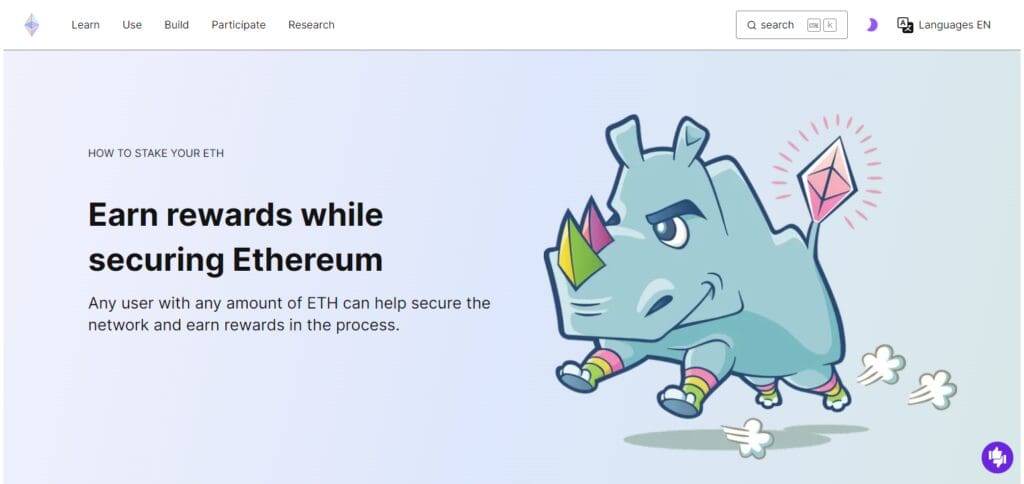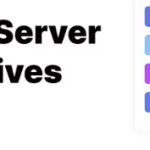In this article, I will discuss how to stake Ethereum on multiple networks to maximize rewards, reduce fees, and improve liquidity. Staking ETH across different platforms, including Ethereum mainnet
Layer 2 solutions, and sidechains, offers flexibility and higher yields. I’ll cover the best networks, platforms, and strategies to help you stake Ethereum efficiently and securely.
What Is Ethereum Staking?
Ethereum staking means keeping ETH aside to earn certain rewards and help out with network security. It pertains to contributing in Ethereum’s Proof-of-Stake (PoS) system through running a validator node or a staking service.

Stakers validate transactions, secure the blockchain and earn ETH as rewards. Solo staking, pooled staking, liquid staking, or with centralized exchanges are the different ways of staking that offer varying degrees of control and accessibility.
How To Stake Ethereum on Multiple Networks

Lido’s Website
As a start, open your browser and go to Lido
Sign in to You Wallet
After launching the platform, connect your wallet to Lido (for example, MetaMask). If your MetaMask is not loaded with sufficient ETH, please deposit first.
Pick Your Network
From the options available, select the corresponding Ethereum network you wish to stake your ETH in, for Solana and Terra.
Add the Amount You Wish to Stake
Determine how much ETH you are willing to stake and confirm your transaction. After verification of the transaction, you will now proceed to receive stETH tokens that display the amount of staked ETH.
Interact with DeFi Platforms
These tokens prove useful over several DeFi platforms and networks.
Check Your Rewards
You can now view while keeping track of the rewards on the Lido dashboard. Additionally, stETH tokens prove useful in an abundance of DeFi functionalities.
Best Practices for Maximizing Rewards
Use Multiple Staking Strategies
- Divide your staking into different networks and sides such as Ethereum mainnet, layer 2s, and sidechains. This results in better risk and reward allocation.
- Implement a combination of pooled staking, liquid staking, and solo staking.
Take Advantage of High Yield Platforms With Low Fees
- Consider the staking yields from the several platforms such as Rocket Pool, Lido, Binance, etc.
- Take into consideration validator commissions and owe withdrawal limits by the bot.
Staking Rewards Should Be Reinverted
- Put rewards back into staking and DeFi protocols to earn additional yield.
- Use liquid staking tokens like rETH, mETH, or stETH for DeFi yield farming.
Keep Stake Tokens Liquid For DeFi Flexibility
- Staking using Lido, Frax, Stader, and others allows liquidity to be kept.
- Staked ETH stETH can be utilized in DeFi to increase yields.
Lower Gas Fee Payments
- Perform transactions during periods of low Ethereum gas fees.
- Make use of layer 2 networks such as Arbitrum, Optimism, and zkSync for cheaper transaction fees.
Maintain Asset Security
- Use Trezer or ledger hardware wallets for increased asset security.
- Review the smart contracts before using new platforms to stake.
Pros And Cons
Pros:
Improved Returns: Striking a proper balance staking on various networks increases the chances of extracting maximum returns.
Cheaper Fees: Transactions on Layer 2 solutions and side chains have significantly less fees relative to the Ethereum mainnet.
Liquid Staking: Staking platforms like Lido and Rocket make use of ETH while still allowing staking.
Lower Risk Single Points of Failures: Using multiple networks means that the disruption of a single network will not affect the earnings in other networks.
Used in Other Staking Platforms: Assets that have already been earned through staking like stETH and rETH can be utilized for additional income in DeFi.
Cons:
Potential Smart Contract Exploits: When staking on multiple networks, the assets are put at risk due to network smart contract weaknesses.
Concentration Issues: Staking services provided by third party businesses leads to less control over assets which leads to higher concentration issues.
Moving ETH Between Networks Within Bridges: Transaction fees can be excessively high as well as the security risks associated with these transfers.
Withdrawing Staked Assets is Always a Huge Problem: Different platforms and networks have different waiting periods for withdrawal requests.
Intricacy: One has to keep track of various staking accounts including rewards, fees to be paid, and risks that will be incurred.
Conclusion
To summarize, staking Ethereum across various networks increases earnings, reduces costs, and provides more flexibility. By selecting reliable platforms, spreading out staking strategies, and utilizing liquid staking, profits can be maximized while mitigating risks at the same time.
Always pay attention to security, fees, and withdrawal limitations before staking. Making use of Ethereum’s mainnet, Layer 2’s, and sidechains, Remember to reevaluate your strategy in order to have the best and most comfortable staking experience. In this case, the best way to expand your ETH holdings is to stake them intelligently.









